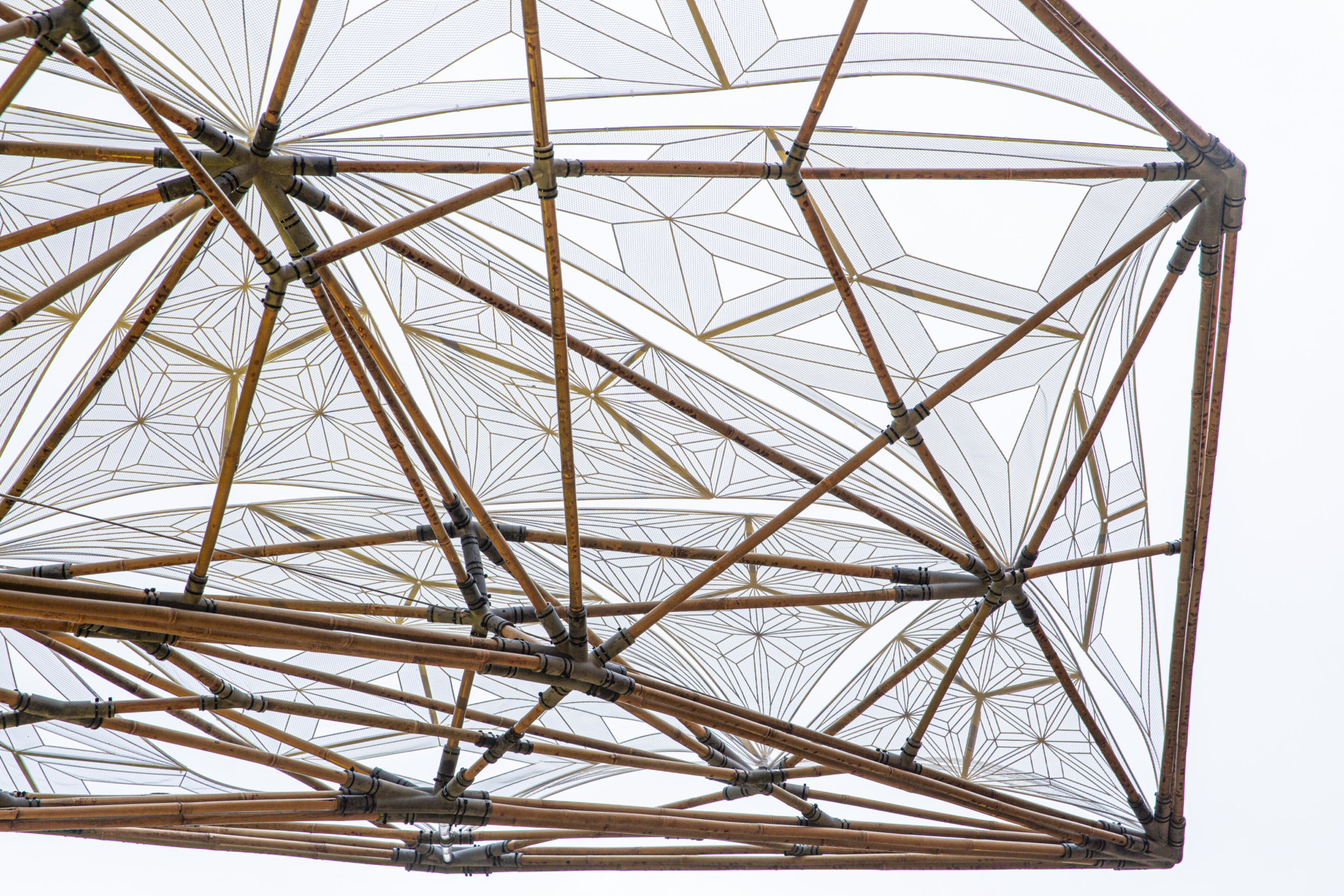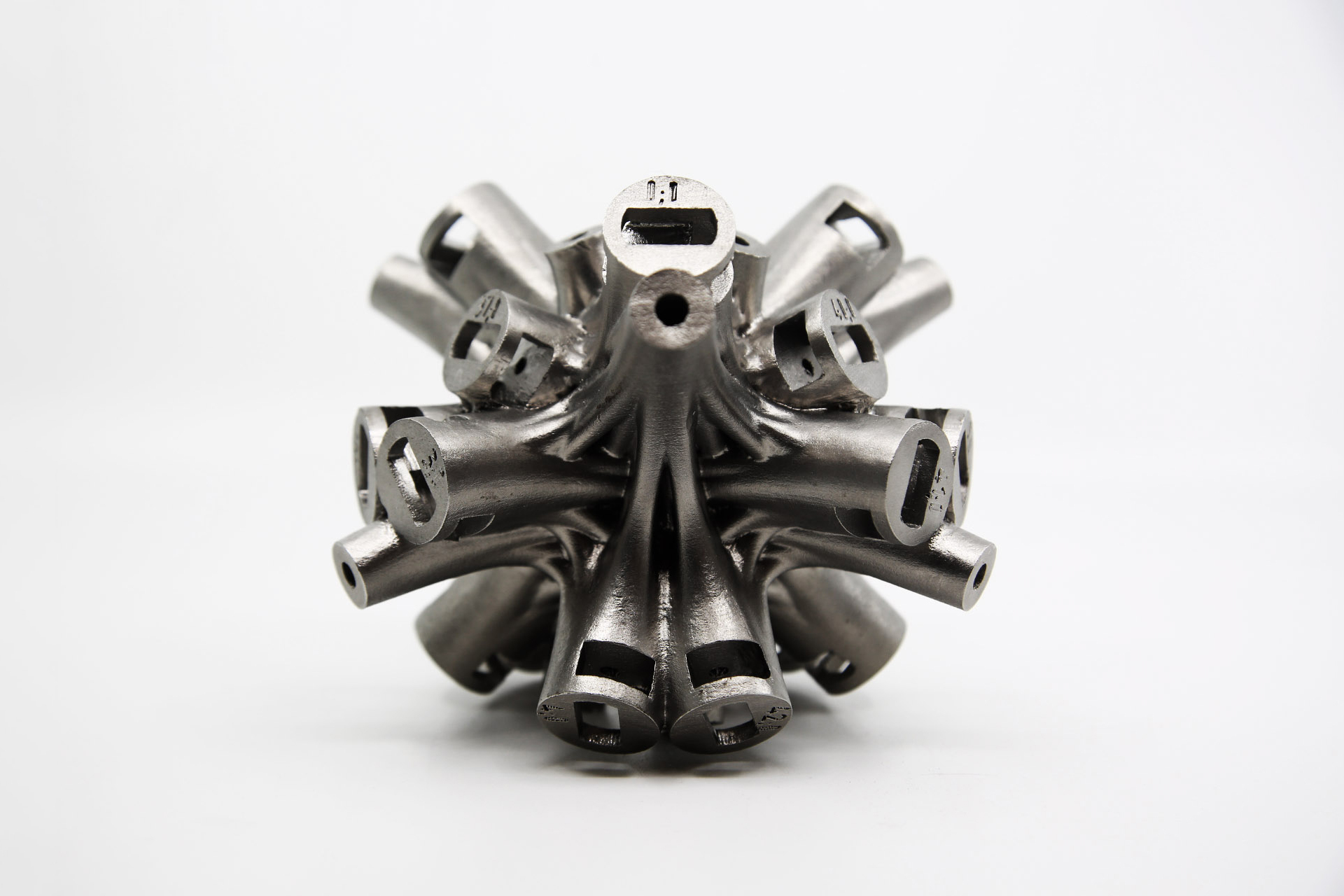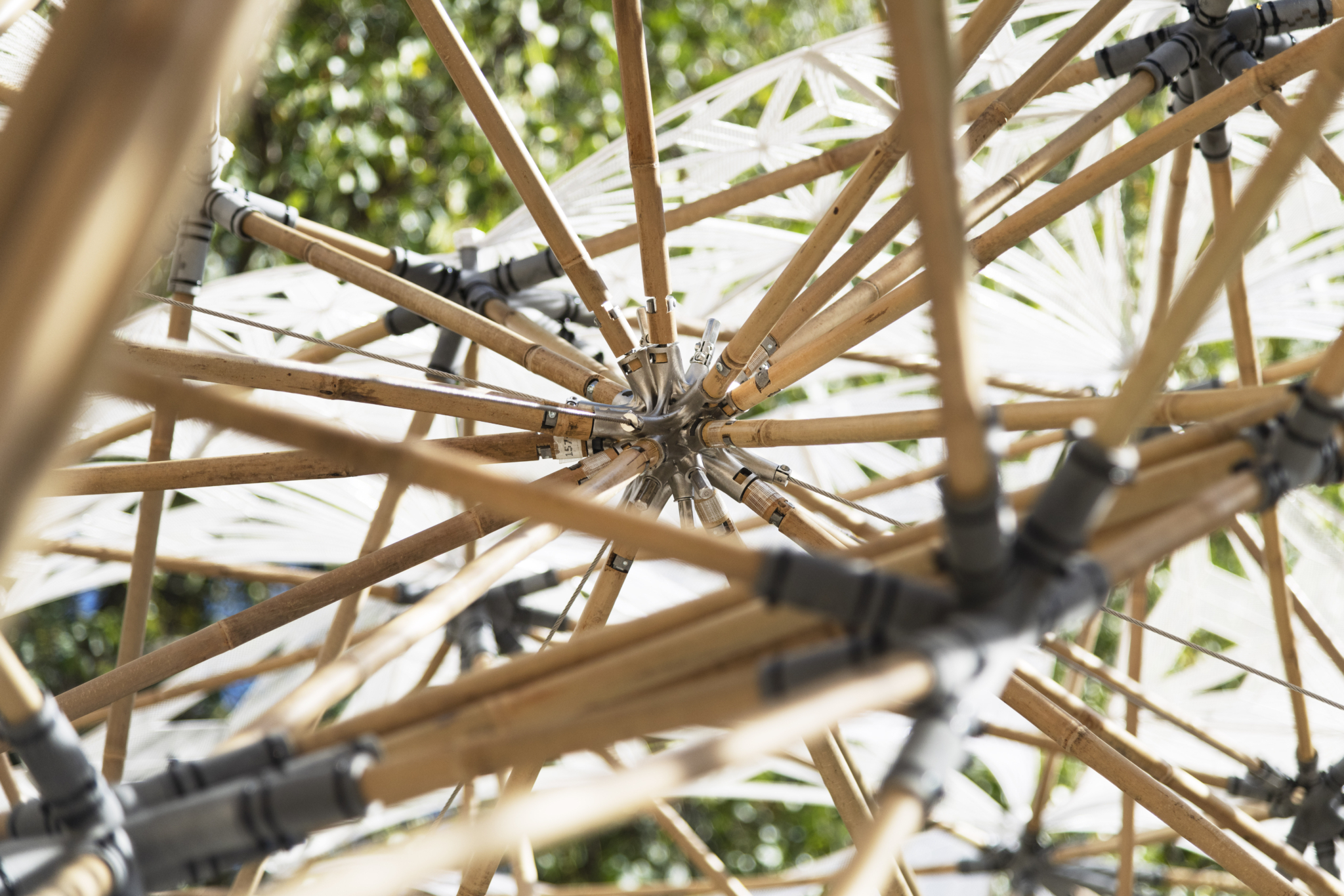15.10.2020
Digital Bamboo
The Digital Bamboo pavilion explores the innovative combination of a naturally grown material with digital fabrication. Bamboo is an excellent sustainable building material, because of its rapid growth and very low weight-to-strength ratio. Customised computational tools were developed to design the ultra-lightweight structure, whose bespoke connections were manufactured using 3D printing technology . The structure covers more than 40 m2 with a total weight of only 200 kg. The Digital Bamboo pavilion showcases a filigree and engaging architecture that surpasses the standardised space frame vocabulary.

Computational design allows the optimisation and formal exploration of complex structures. The high-performance structure covers a large area, cantilevering almost 5 meters in three directions whilst requiring minimal support. The main load-bearing system is defined by a spatial truss reinforced by post-tensioned cables. The geometry of the pavilion, consisting of more than 900 bamboo elements, was form-found using specifically developed digital tools.
The bamboo elements are connected via a new system based on 3D printing technology. The generation of the connections was automated thanks to a digital process and developed to fulfil mechanical requirements. Their intricate geometry encapsulates necessary functions such as tolerances for assembly and bamboo inhomogeneities, connections to the shading panels, labelling, and cable fittings. In parallel, their volume is minimised to save time and cost. A hybrid strategy using MultiJet Fusion technology and Direct Metal Laser Sintering was used to manufacture the 380 bespoke connections.

The shading panels of the pavilion are designed through a custom computational process and fabricated through add-on 3D printing of a recyclable UV resistant thermoplastic on a lightweight lycra textile. 3D printing stiffens and shapes the fabric into flexible bespoke panels. The composite elements are locally reinforced reducing the amount of material used.
The construction system developed for the Digital Bamboo pavilion aims to reduce the logistic efforts of construction while exploiting the advantages of digital fabrication for a more sustainable building culture. Following the principle of distributed prefabrication , the complexity of the structure is encapsulated in small parts that can be fabricated all over the world using 3D printing. These custom parts can be used to construct high-performance structures together with local materials.

Thanks to a modular construction scheme, the structure allows fast assembly and disassembly. The pre-assembled parts of the pavilion were mounted on-site in only 48 hours. Digital Bamboo offers anew paradigm for how digital fabrication can lead to a sustainable future in construction, combining locally sourced materials with 3d printed parts to achieve new immersive architectural expression.
The Digital Bamboo Pavilion is designed by students of the Master in Advanced Studies in Architecture and Digital Fabrication 2019-2020 at the ETH Zurich and is based on research at the chair of Digital Building Technologies.
The pavilion in numbers
- Dimensions: 9 x 9 m (footprint) x 5 m height
- Total area: 40 m2
- Total weight: 200 kg
- On-site assembly time: 48h
- 930 bamboo poles with 20 mm diameter
- 380 connections in PA12, 1 joint in 316L Stainless Steel
- 35 m2 of shading panels
Teaching Team
Marirena Kladeftira (Project lead), Matthias Leschok, Eleni Skevaki (Chair of Digital BuildingTechnologies, ETH Zurich), Davide Tanadini (Chair of Structural Design, ETH Zurich), Yael Ifrah(MAS ETH DFAB coordination, Chair of Digital Building Technologies)
Support Structural Design
Dr. Ole Ohlbrock and Dr. Pierluigi D’Acunto (Chair of Structural Design, ETH Zurich)
Design Development MAS ETH DFAB 19-20 Students
Maria Pia Assaf, Jomana Baddad, Frederic Brisson, Yu-Hung Chiu, Rémy Clemente, IouliosGeorgiou, Mahiro Goto, Anton Johansson, Laszlo Mangliar, Dinorah Martinez Schulte, EdurneMorales Zuniga, Fatemeh Salehi Amiri, Emmanuelle Sallin, Indra Santosa, Eliott Sounigo, ChanonTechathuvanun, Ping-Hsun Tsai
Research Collaboration Partner on AM for Bespoke Joints
HS HI-TECH , Seoul, South KoreaDr. Seungkyu Yoo (CTO), Yena Jung (Project lead), Hyunsoo Park, Sangjae Park, SeunghyunBaek, Heesang Jeong, Hoyeon Lee, Eungseo Kim, Yonghee Jeong, Jonghak Park, Hyowon Jung,Youngmin Joo, Younhyun Kim (Vice President), Ino Lee (Chief Executive Officer)
The development of the hybrid joints project in collaboration with HS HI-TECH is supported by theBilateral Science and Technology Cooperation Program of ETH Zurich with an InnovationPartnership Grant (Project #IPG 02-112019 “AM for bespoke temporary structures.”)
Supporting technicians
Christian Egli, Tobias Hartmann, Michael Lyrenmann, Thomas Posur, Andrea Perissinotto, Andreas Reusser
Sponsoring and Support
Hewlett Packard, SGSolution AG, AF Fercher AG, Holcim, Abuma Gmbh , RapLab ETH Zurich
Exhibition
Zentrum Architektur Zürich, ZAZ BelleriveProf. Christian Schmid, Evelyn Steiner (Curator), Corina Hösli (Event coordination)


